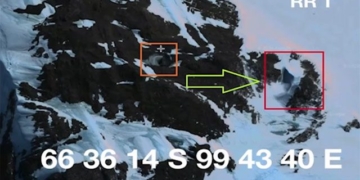New seismic data reveals that the helium deposit discovered in February in Minnesota is larger than initially estimated, bringing the project closer to commercial extraction.

Pulsar Helium discovered a new helium deposit in February this year. (Photo: Pulsar Helium).
A helium deposit in northern Minnesota is likely larger both in width and depth, according to new survey results. Seismic data from a 1.1 km area near the city of Babbitt indicates that the recently discovered deposit exceeds initial estimates, much to the delight of resource extraction company Pulsar Helium and potential clients, Live Science reported on July 11. Recent tests have also revealed that the concentration of helium underground is even higher than the results collected in March, confirming that the Minnesota project will play a significant role in the global helium market.
“We are very excited to receive the 2D seismic data,” said Thomas Abraham-James, president and CEO of Pulsar Helium. “The results confirm that the helium deposit is fairly uniform at a depth of 530 – 670 meters underground.”
Laboratory tests conducted in June placed the concentration of helium in the deposit at approximately 8.7 – 14.5%, surpassing the previous maximum estimate of 12.4 – 13.8%. This concentration is among the highest in the industry. According to Abraham James, any helium deposit with a concentration above 0.3% is economically viable.
While helium is the second most abundant gas in the universe, it is quite scarce on Earth, forming only through nuclear fusion and the radioactive decay of uranium and thorium. The demand for this gas is high as it is a crucial cooling component in rockets, nuclear reactors, and medical diagnostic equipment such as magnetic resonance imaging (MRI). As a result, the global supply of helium is dwindling, and some industries are facing shortages.
The helium deposit in Minnesota could provide a solution for storing and accessing helium on demand without needing underground reserves. Helium naturally flows to the surface at a rate of 23,250 cubic meters per day, meaning that hydraulic fracturing is unnecessary, according to Pulsar Helium. The company is sharing testing data with an independent team to calculate the scale of the deposit, with results expected to be published by the end of July 2024.





















































